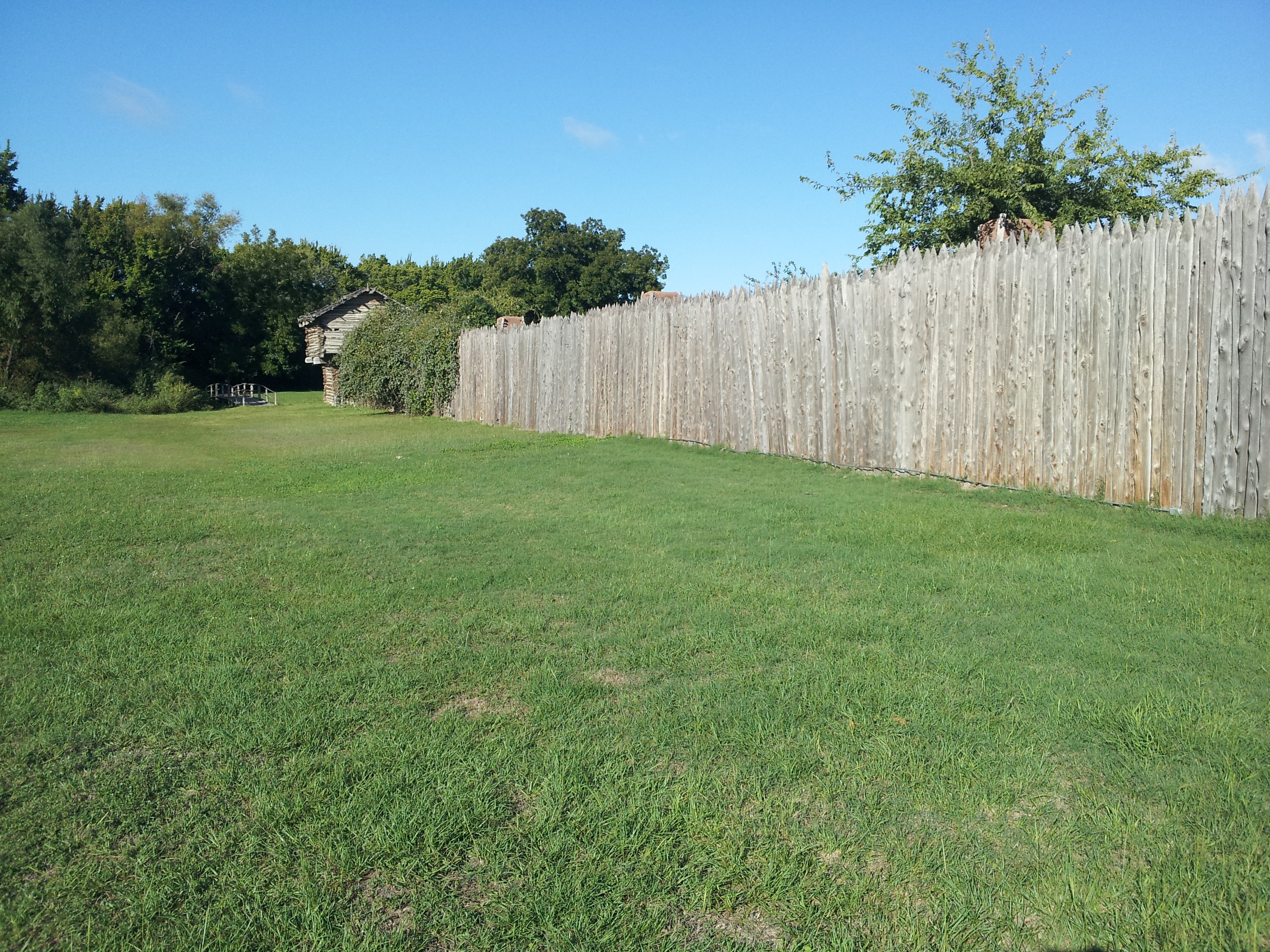|
Fort Parker State Park
Fort Parker State Park is a state park near the City of Mexia in Limestone County, Texas, United States. The city of Mexia and three local landowners donated the land creating the park in 1935. From 1935 to 1942, Civilian Conservation Corps Company 3807(C) built roads, recreational facilities, the concession building and a dam of limestone, concrete, and soil across the Navasota River, creating Lake Fort Parker. The park was dedicated by former Texas Governor Pat Neff and opened to the public in May 1941. Fort Parker State Park has three hike-and-bike trails: Springfield trail (1.5-mile loop), Navasota River Trail (0.5 mile one way), and Baines Creek Trail (2.5 miles one way). The Bur Oak Trail (0.5-mile loop) is a nature trail with an interpretive guide pamphlet available. Trees in the park include bur oak, water oak, blackjack oak, pecan, and eastern red cedar (juniper). Other plants that can be found are American beautyberry and sumac. Inside the park is the Old Sprin ... [...More Info...] [...Related Items...] OR: [Wikipedia] [Google] [Baidu] [Amazon] |
Limestone County, Texas
Limestone County is a County (United States), county in the U.S. state of Texas. As of the 2020 United States census, 2020 census, its population was 22,146. Its county seat is Groesbeck, Texas, Groesbeck. The county was created in 1846. History Native Americans Natives friendly to the settlers resided in East Texas before the Kiowa, Apache and Comanche intruded upon their territory. These tribes hunted, farmed the land, and were adept traders. The Tawakoni branch of Wichita (tribe), Wichita Indians originated north of Texas, but migrated south into east Texas. From 1843 onward, the Tawakoni were part of treaties made by both the Republic of Texas and the United States. Tawakoni were also sometimes known as Tehuacana. The Limestone County town of Tehuacana, Texas, Tehuacana was settled on the former site of a Tehuacana village. The Waco people were also a branch of the Wichita Indians. Settlers Limestone County was part of the Haden Harrison Edwards (800 families) and Robe ... [...More Info...] [...Related Items...] OR: [Wikipedia] [Google] [Baidu] [Amazon] |
Juniperus Virginiana
''Juniperus virginiana'', also known as eastern redcedar, red cedar, Virginian juniper, eastern juniper, red juniper, and other local names, is a species of juniper native to eastern North America from southeastern Canada to the Gulf of Mexico and east of the Great Plains. Farther west it is replaced by the related ''Juniperus scopulorum'' (Rocky Mountain juniper) and to the southwest by ''Juniperus ashei'' (Ashe juniper).Farjon, A. (2005). ''Monograph of Cupressaceae and Sciadopitys''. Royal Botanic Gardens, Kew. Adams, R. P. (2004). ''Junipers of the World''. Trafford. It is not to be confused with ''Thuja occidentalis'' (eastern white cedar). Description ''Juniperus virginiana'' is a dense slow-growing coniferous evergreen tree with a conical or subcylindrical shaped crown that may never become more than a bush on poor soil, but is ordinarily from tall, with a short trunk in diameter, rarely to in height and in diameter. The oldest tree reported, from West Virginia, w ... [...More Info...] [...Related Items...] OR: [Wikipedia] [Google] [Baidu] [Amazon] |

